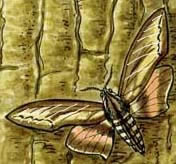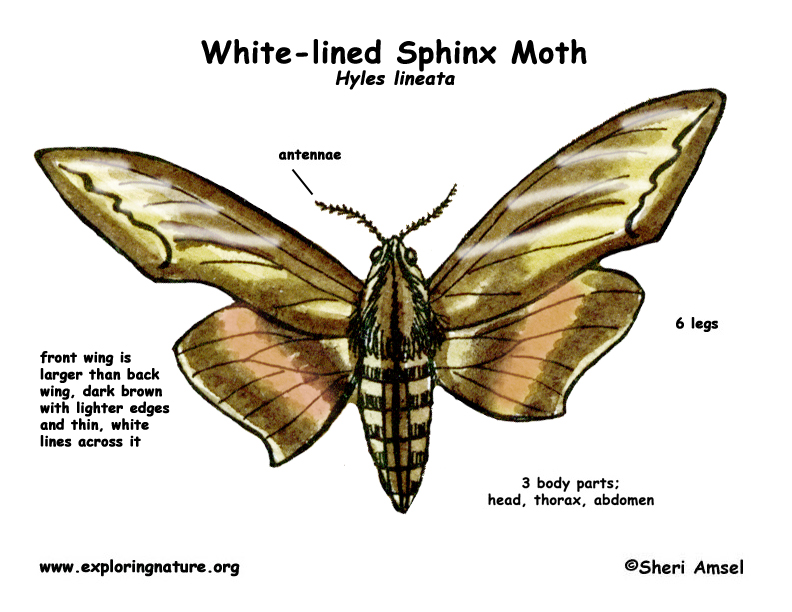

They are found in southern Canada, through most of the U.S. south to Mexico and Central America. They are also found in Eurasia and Africa.
They live in open areas like fields, deserts, gardens and yards.
Their front wing is larger and dark brown with lighter edges and thin, white lines across it. The back wing is smaller and dark with a reddish pink band through the center.
They are active from dusk through to dawn, but they will also fly during the day.
The adults eat flower nectar while the caterpillars eat the leaves of many plants including: evening primrose, elm, grape, tomato, etc.
Females lay eggs on leaves of plants the hatching caterpillars will eat.
Kingdom: Animalia
Phylum: Arthropoda
Class: Insecta
Order: Lepidoptera
Family: Sphingidae
Genus: Hyles
Species: H. lineata
When you research information you must cite the reference. Citing for websites is different from citing from books, magazines and periodicals. The style of citing shown here is from the MLA Style Citations (Modern Language Association).
When citing a WEBSITE the general format is as follows.
Author Last Name, First Name(s). "Title: Subtitle of Part of Web Page, if appropriate." Title: Subtitle: Section of Page if appropriate. Sponsoring/Publishing Agency, If Given. Additional significant descriptive information. Date of Electronic Publication or other Date, such as Last Updated. Day Month Year of access < URL >.
Amsel, Sheri. "Moth (White-lined Sphinx)" Exploring Nature Educational Resource ©2005-2024. December 13, 2024
< http://www.exploringnature.org/db/view/Moth-White-lined-Sphinx >

